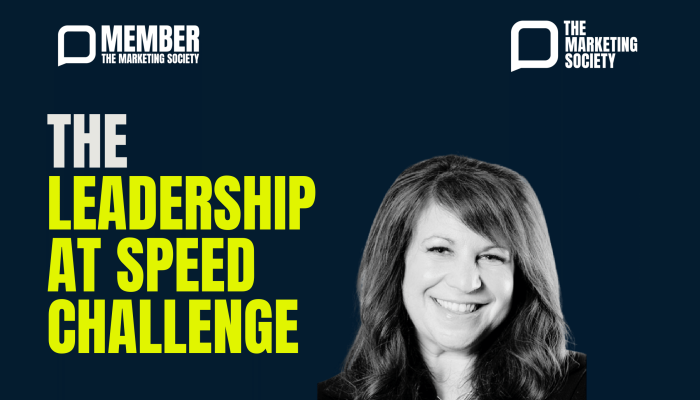Anyone who’s worked in this industry for long enough will have become almost numb to jargon and cliché. From “owning” calendar days of the year,(“how do we OWN Pancake Day this year?”); to consumers “feeling lost” in a consumer journey due to “a lack of a clear call to action”.
But the most baffling cliché must be the notion that advertising has the ability to engage one set of consumers whilst simultaneously “alienating” another.
We’ve all heard it. “We want to modernise and appeal to a younger audience, but we don’t want to alienate our existing customers”. “We need to speak to dog owners but we can’t alienate cat owners!”.
“Alienation”.
The definition of alienation is ‘to make someone feel isolated’.
The feeling of isolation is an uncomfortable thought for anyone.
Advertising, at its best, builds distinctive memories of brands in people’s minds.
These memories may, if we’re lucky, translate into an unconscious response to choose your brand over someone else’s when it comes to a purchasing decision.
But should we be losing sleep over an advert “alienating” anyone? Does advertising really have the power to make someone feel isolated?
Last month saw the launch of Nike’s brilliant ‘Nothing Beats a Londoner’ campaign.
Hats off to the smart people at Nike and at W+K. It’s a beautifully written and brilliantly observed film written by very clever Londoners about Londoners for Londoners.
The campaign exploded in social channels on TV and has prompted conversations about the brand up and down the country. On the whole, the response has been positive. If friends and family who don’t work in the industry want to talk to you about an ad, it’s a good sign that it’s had an impact on culture.
But not all reactions to the Nike ad were positive.
There was some concern raised on social media that Nike could risk alienating people who live outside the M25.
But I suspect this won’t happen.
Most people living outside London who saw the ad, at best will warm to the brand and find it funny. At worst, the reaction will probably be one of indifference. A bit “meh” (scientific I know).
An ad tracking study on the Nike ad from Real Eyes was published earlier this week. It showed that it outperformed their benchmark average by 79% and because this study is UK-wide it suggests that the fears of alienation may not be something for Nike to worry about.
It’s unsurprising really. Just because creative work doesn’t precisely mirror a defined audience, it doesn’t mean it loses the power to emotionally connect with it.
How else would you explain 45% of Diet Coke drinkers being men? A brand famously built on being aimed at women? Or Hip Hop now being the most listened to music genre in the United States, overtaking rock for the first time last year (Nielsen Music 2017). Teenagers living in rural America can still emotionally connect with music born out of cities thousands of miles away.
I think the real challenge with the cliché that advertising can “alienate people” lies in the assumptions it makes about consumers.
To feel ‘alienated’ you’re assuming consumers feel a sense of loyalty to you as a brand.
The reality is, as Andrew Ehrenberg said, “Your consumer is just someone else’s consumer who buys you occasionally”.
The truth is that consumers don’t think about your brand as much as you’d like them to.
Perhaps the most worrying statistic is that 90% of advertising goes unnoticed and a recent study by Ogilvy found that 77% of brands could disappear tomorrow and most wouldn’t be missed.
I’d argue that alienating people is the last thing advertisers and brands should be worried about. Instead, it’s consumer indifference that should be keeping us feeling the pressure.
At Ogilvy we aim to create socially relevant creative work. These are campaigns that have the ability to join or generate a conversation bigger than advertising and that’s exactly what the Nike Londoner ad does.
The Nike ad, whilst focusing on London, is really an ad about youth culture. It’s an ad written in the language of young people up and down the country. I don’t think it has the ability to ‘alienate’ anyone because the accent happens to be a London one. Just ask the teens we spoke to in Bury (Britain’s youngest town), located over 200 miles from London as part of our ‘Get Out There’ initiative.
This is true for any number of Ogilvy’s campaigns. We use Eric Cantona as the face of Kronenbourg. But he doesn’t alienate beer drinkers who don’t happen to support Man Utd or Leeds. I’m also sure our Christmas Boots ad doesn’t alienate people who don’t have a sister.
Let’s have faith in the power of empathy and in consumers engaging with meaningful stories, however far from their personal life experiences the creative work might be. After all how many of us have been hypnotized by white supremacists or fallen in love with a sea creature? Both of which are plotlines of films nominated for this year’s Oscars. As an industry let’s drop the clichés and stay focused on ensuring we’re creating work that makes a dent in culture and keep brands as socially relevant as they can be.
By Gen Kobayashi, head of strategy at O&M London
@mrkobayashi



